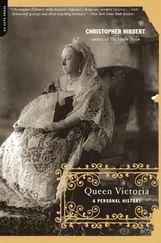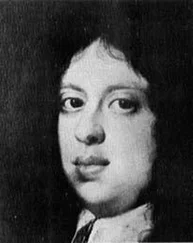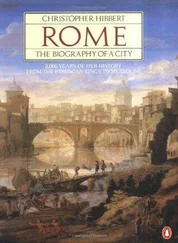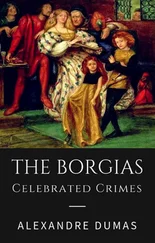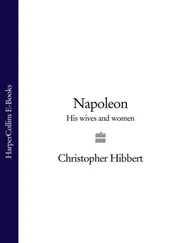Rodrigo had no intention of putting an end to such ‘frivolities’; but he did take considerably more care in the future not to take part in them in places or in company from which reports were likely to reach the ears of the stern Pius II. Such entertainments as those enjoyed in the garden at Siena were now to be held within the walls of his luxurious palace, which the vice-chancellor’s new wealth, both legitimately and fraudulently acquired, enabled him to build in Rome.
During Easter week in 1462, a grand procession was held in Rome to escort the skull of St Andrew, brother of St Peter, which Pius II had acquired after the relic had been saved from the Turks invading Greece. ‘Such crowds had blocked the streets that the soldiers guarding the Pope, who were armed with truncheons, were hardly able to open a path for him.’ The whole city was adorned. Narrow streets were ‘covered with canopies and branches of greenery to shade them from the sun and all the houses were decked with hangings and tapestries in canopies,’ wrote Pius II. ‘Everyone vied with each other in doing honour to the Apostle.’ Of all the magnificently ornamented palaces along the route, none was more lavishly decorated than that of Cardinal Rodrigo Borgia. As the pope wrote in his memoirs:
All the cardinals who lived along the route of the procession had decorated their houses splendidly… But all were eclipsed in cost and ingenuity by that of Rodrigo, the Vice-Chancellor. His huge towering house, built on the site of the ancient mint, was bedecked with marvellous and costly tapestries… He had decorated his neighbours’ houses as well as his own, so that the surrounding square was transformed into a sort of park, filled with music and song and his own palace seemed to be gleaming with gold, such as they say the Emperor Nero’s palace once did.
The interior of the Borgia palace was equally splendid. One visitor described the ever-increasing magnificence:
The walls of the entrance hall are hung with tapestries depicting various historical scenes. A small drawing-room, also decorated with fine tapestries, leads off it. The carpets on the floor harmonize with the furniture, which includes a sumptuous day-bed upholstered in red satin with a canopy over it, and a chest on which is displayed a large and beautiful collection of gold and silver plate. Beyond this drawing-room there are two more reception rooms, one of them with another canopied day-bed covered with velvet, the other with a sofa covered with cloth-of-gold. In this latter room is a large table on which is spread a fine velvet cloth and around which is a set of finely carved chairs.
In this palace and its outbuildings and stables, as many as two hundred servants, several of them slaves, lived and worked, wearing the dark mulberry red and yellow of the Borgia livery. In addition to the grooms and guards and domestic servants, there were numerous courtiers, secretaries, and clerks installed in the rooms above, as well as the cardinal’s lawyer, Camillo Beneimbene, discreet and reliable, the repository of many secrets.
In the square outside the palace on festive occasions, the populace was regaled with allegories and pantomimes, fireworks, the roar of cannons, and the savagery of bullfights, while cups of wine were offered to the crowds of spectators by Rodrigo’s numerous servants.
Despite the huge sums expended upon his palace and its furnishings, Rodrigo had enough money to spare for such gestures as the supply and equipment of a galley for the Venetian fleet in Christendom’s war against the Turkish infidels, and for generous contributions to the crusade, which Pius II was planning with missionary zeal and which he intended to lead in person. Accompanied by Rodrigo, he left Rome for Ancona, where, already a gravely ill man, he died in the episcopal palace on August 15, 1464.
Rodrigo, too, fell ill at Ancona, a notoriously unhealthy city, possibly with the plague or with some sexually transmitted disease. ‘The Vice-Chancellor is stricken with illness,’ the governor of Ancona was informed, ‘and this is its symptom: he has pain in his ears and a swelling under his arm. The doctor who has seen him says that he has little hope of curing him, especially considering that a short while ago he did not sleep alone in his bed.’ Certainly on his way to Ancona, Rodrigo had not stinted himself in enjoying the masked balls and nocturnal parties that were given at his request so that the ‘passage of the dignitaries of the Holy Church,’ northeast across the Apennines to the Adriatic coast, would not ‘depress the social life’ of the towns through which he passed.
Rodrigo, however, turned out not to be as seriously ill as his doctors first thought, and he was back in Rome in time to attend the conclave to choose the new pope. The cardinals’ choice this time was a Venetian, Pietro Barbo, a handsome, self-regarding, and pleasure-loving man who had originally intended becoming a merchant like his rich father; but when his uncle had been elected to succeed Martin V as Pope Eugenius IV, he decided that the Church might well offer a life more suited to his character. His love of display, indeed, was soon indulged by building a fine palace in central Rome, the Palazzo San Marco, now the Palazzo di Venezia; he moved the papal court there in 1466 and lived in the palace, in ostentatious splendour, surrounded by his superb collection of antique cameos, bronzes, marble busts, and precious gems until his death in 1471.
At the conclave following Paul II’s death, Rodrigo played a key role in manoeuvring the election of Francesco della Rovere, who took the name Sixtus IV. A large, ambitious, gruff, and toothless man with a huge head, a flattened nose, and an intimidating presence, Sixtus IV had been born into an impoverished fishing community in Liguria and became a Franciscan, rising though the ranks of the order to become its minister general. ‘This pope was the first,’ claimed Niccolò Machiavelli, ‘to show just how much a pontiff could do and how many actions which would have been called errors in earlier times were now hidden under the cloak of papal authority.’ Others praised his nobility, ‘not of birth but of character and erudition,’ and many commented on his fervent devotion to the Virgin.
From the moment of his election, this apparently austere friar was unremitting in granting to his relations offices, money, and profitable lordships in the Papal States — those lands in central Italy that belonged to the pope, the Patrimony of St Peter. He soon became notorious for the particularly lucrative preferments he lavished upon two young nephews, Pietro Riario and Giuliano della Rovere, both of whom he made cardinals within months of his election and appointed to numerous abbacies, benefices, and bishoprics. He also gave red hats to another four of his relations, a total of six of the thirty-four cardinals he created during his long pontificate, not all of whom were as unworthy as his family.
The two nephews played a prominent part in the reception of the young Neapolitan princess Eleonora of Aragon as she passed through Rome in June 1473 on her way north to marry Ercole d’Este, the Duke of Ferrara. Such was the grandeur of the apartments furnished for her at Pietro Riario’s palace at Santi Apostoli that, as she recounted in a letter to her father, the king of Naples, even her chamber pot was a vessel of gilded silver. ‘The treasure of the Church,’ she wrote, in astonishment, ‘is being put to such uses.’ The sumptuous banquet Pietro hosted for her lasted six hours, a relentless succession of opulent dishes, eaten to the accompaniment of music, poetry, and dancing: gilded and silvered breads, peacocks, pies filled with live quail that ran about the table when the crust was removed, a whole bear, plates of silvered eels and sturgeon, and ships made of sugar filled with silver acorns, the della Rovere emblem.
Читать дальше

